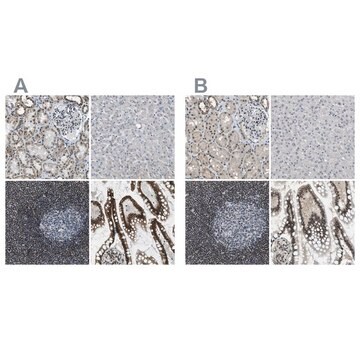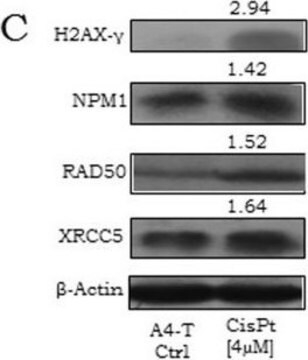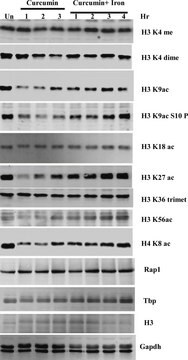B0556
Anti-B23 antibody, Mouse monoclonal
clone FC82291, purified from hybridoma cell culture
Synonym(s):
Anti-NPM, Anti-Nucleophosmin
About This Item
Recommended Products
biological source
mouse
Quality Level
conjugate
unconjugated
antibody form
purified immunoglobulin
antibody product type
primary antibodies
clone
FC82291, monoclonal
form
buffered aqueous solution
mol wt
antigen 37 kDa
species reactivity
rat, kangaroo rat, canine, bovine, human, mouse, monkey, hamster
packaging
antibody small pack of 25 μL
concentration
~0.5 mg/mL
technique(s)
immunocytochemistry: suitable using 2% formaldehyde-acetone or 10% formalin/methanol-1% NP-40
immunoprecipitation (IP): suitable
indirect ELISA: suitable
western blot: 0.2-0.4 μg/mL using a whole extract of 3T3 (mouse fibroblasts) cells
isotype
IgG1
UniProt accession no.
shipped in
dry ice
storage temp.
−20°C
target post-translational modification
unmodified
Gene Information
human ... NPM1(4869)
mouse ... Npm1(18148)
rat ... Npm1(25498)
General description
Phosphorylation causes the dissociation of B23 from the centrosome and enables the duplication of the centrosome during cell mitosis. B23 was also found to be involved in pro-myelocytic leukemia in which the gene for B23 fuses with retinoic acid receptor a (RARa). As a consequence, a fusion protein (60-7 0 kDa) is produced containing parts of the two genes.
Specificity
Immunogen
Application
Physical form
Preparation Note
Disclaimer
Not finding the right product?
Try our Product Selector Tool.
Storage Class Code
12 - Non Combustible Liquids
WGK
WGK 2
Flash Point(F)
Not applicable
Flash Point(C)
Not applicable
Choose from one of the most recent versions:
Already Own This Product?
Find documentation for the products that you have recently purchased in the Document Library.
Our team of scientists has experience in all areas of research including Life Science, Material Science, Chemical Synthesis, Chromatography, Analytical and many others.
Contact Technical Service








